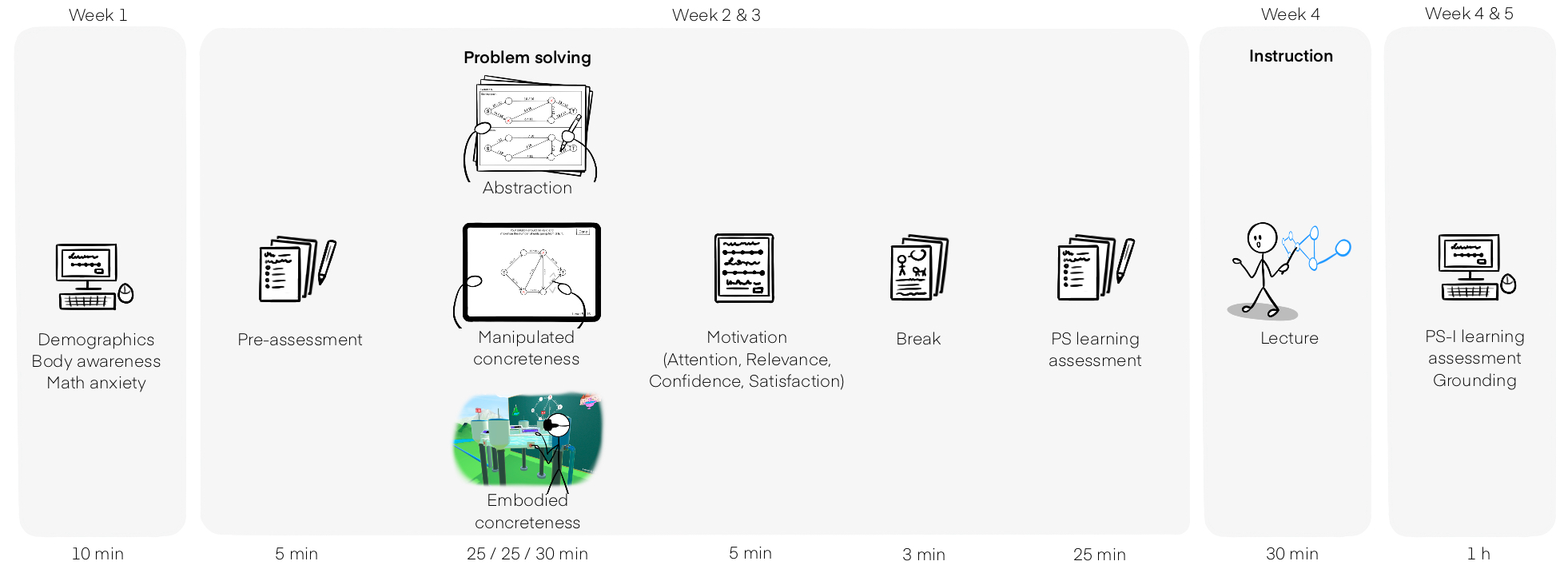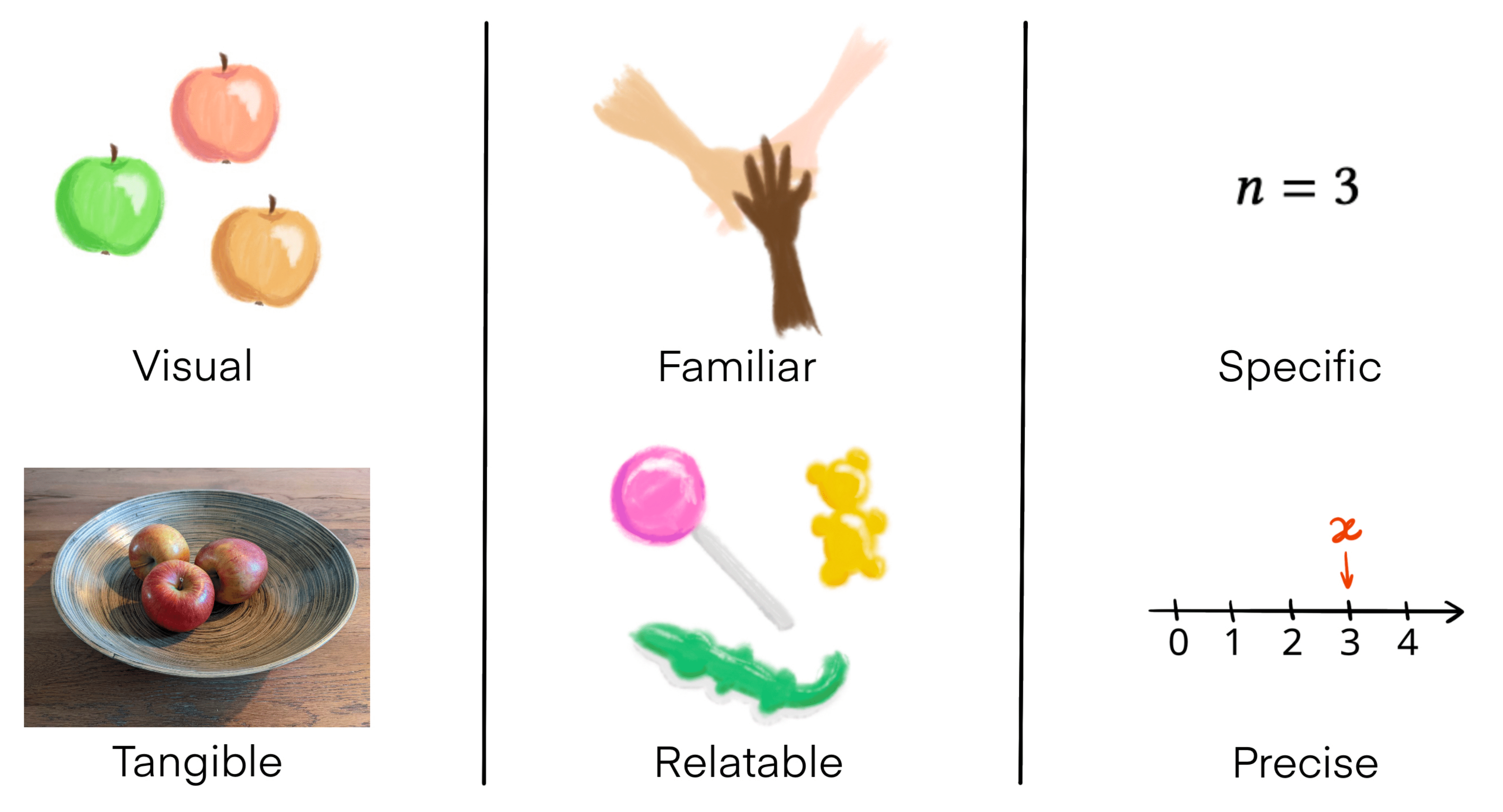Embodied Concreteness
Oct 2022Our paper, "Grounding Graph Theory in Embodied Concreteness with Virtual Reality", is part of TEI '23: Proceedings of the Seventeenth International Conference on Tangible, Embedded, and Embodied Interaction.

Abstract
Abstract mathematics can be difficult to grasp, in part because it relies on symbols and formalisms that are powerful yet meaningless to novices unless grounded in concreteness. Although a wide corpus of research focuses on concreteness in mathematics education, the notion of concreteness can be apprehended in various ways and it is not yet clear which specific aspects of concreteness help the learners. In this paper, we explore embodiment as a form of concreteness to ground abstract mathematics. First, we designed and evaluated an embodied learning activity on graph theory. Through a user study with 89 participants, we then compared three approaches: abstraction, manipulated concreteness, and embodied concreteness. Our results show that, compared to abstraction, both forms of concreteness increase learners’ perceived attention, confidence, and satisfaction. However, only embodied concreteness increases perceived relevance and grounding. Moreover, unlike manipulated concreteness, embodied concreteness does not impair learning outcomes nor transfer abilities.
Video
User study protocol

Concreteness
In our paper, we also offer a brief overview of the different meanings of concreteness used in the field of mathematics education, as illustrated in the following figure.

Team
- Julia Chatain - Final prototype implementation, supervision, concreteness study, paper writing.
- Rudolf Varga - First prototype implementation, usability user study, paper revision.
- Violaine Fayolle - Graphic design.
- Prof. Dr. Manu Kapur - Learning Sciences supervision.
- Prof. Dr. Robert W. Sumner - Computer Science supervision.
Acknowledgments
We would like to thank:
- Dražen Popović, Keny Chatain, Anna Ettlin, Charlotte Müller, Vera Baumgartner, Samuel Tobler, GTC and LSE for the support and feedback.
- Édouard Angebault and Fraser Rothnie for some of the graphical elements.
- Fábio Porfírio and Silvia Ladner for their help with the user study.
- The Future Learning Initiative of ETH Zurich for supporting and funding our project.
- The reviewers for their insightful comments to improve our work.
- and, most importantly, the participants of the user studies as well as Dr. Felix Friedrich for making our project possible.
Publication
Chatain, Julia, Rudolf Varga, Violaine Fayolle, Manu Kapur, Robert W. Sumner. "Grounding Graph Theory in Embodied Concreteness with Virtual Reality". In TEI '23: Proceedings of the Seventeenth International Conference on Tangible, Embedded, and Embodied Interaction. (2023). (link) (pdf)
Related Links
Blog article on different meanings of abstraction. (link)
Kudos page. (link)